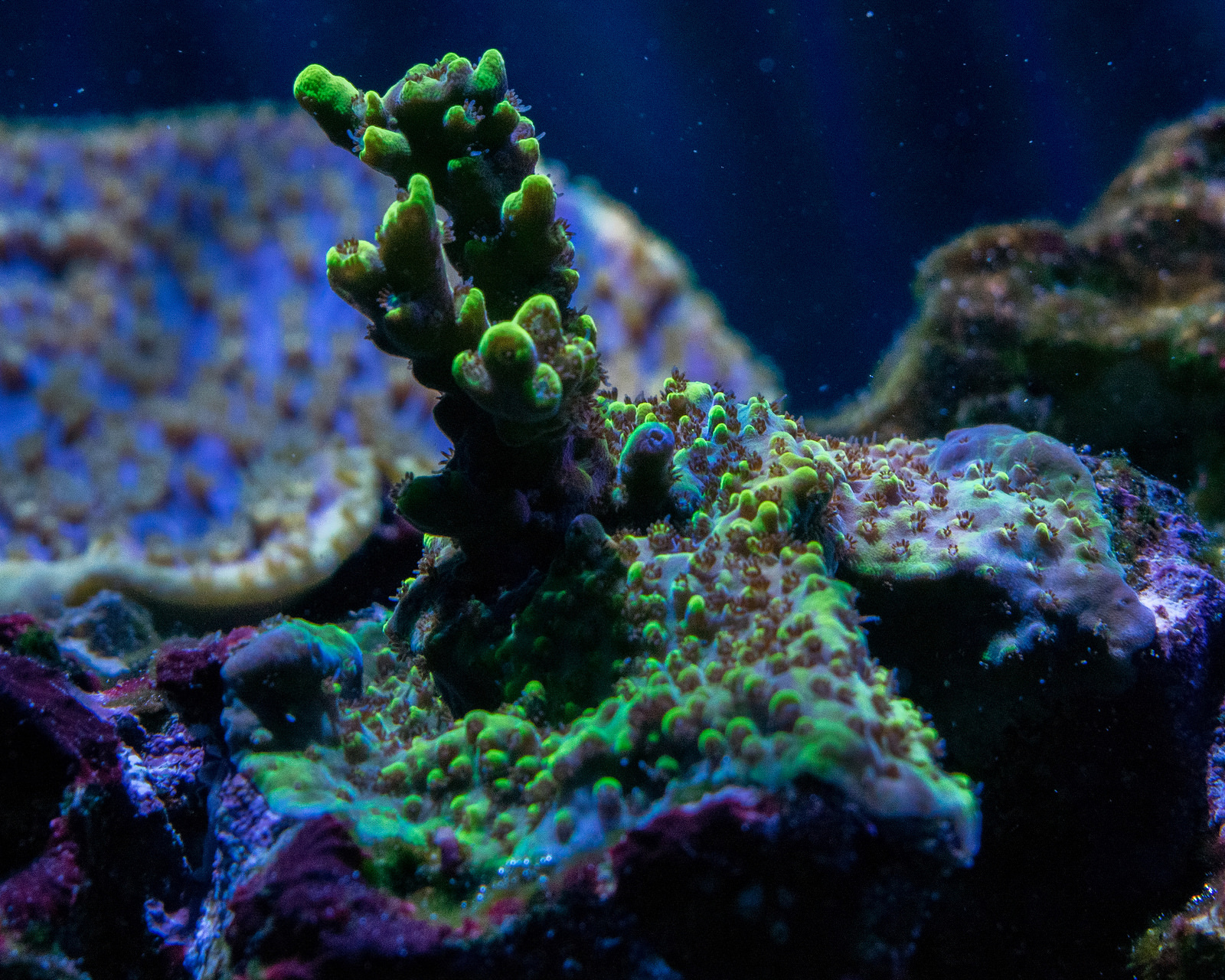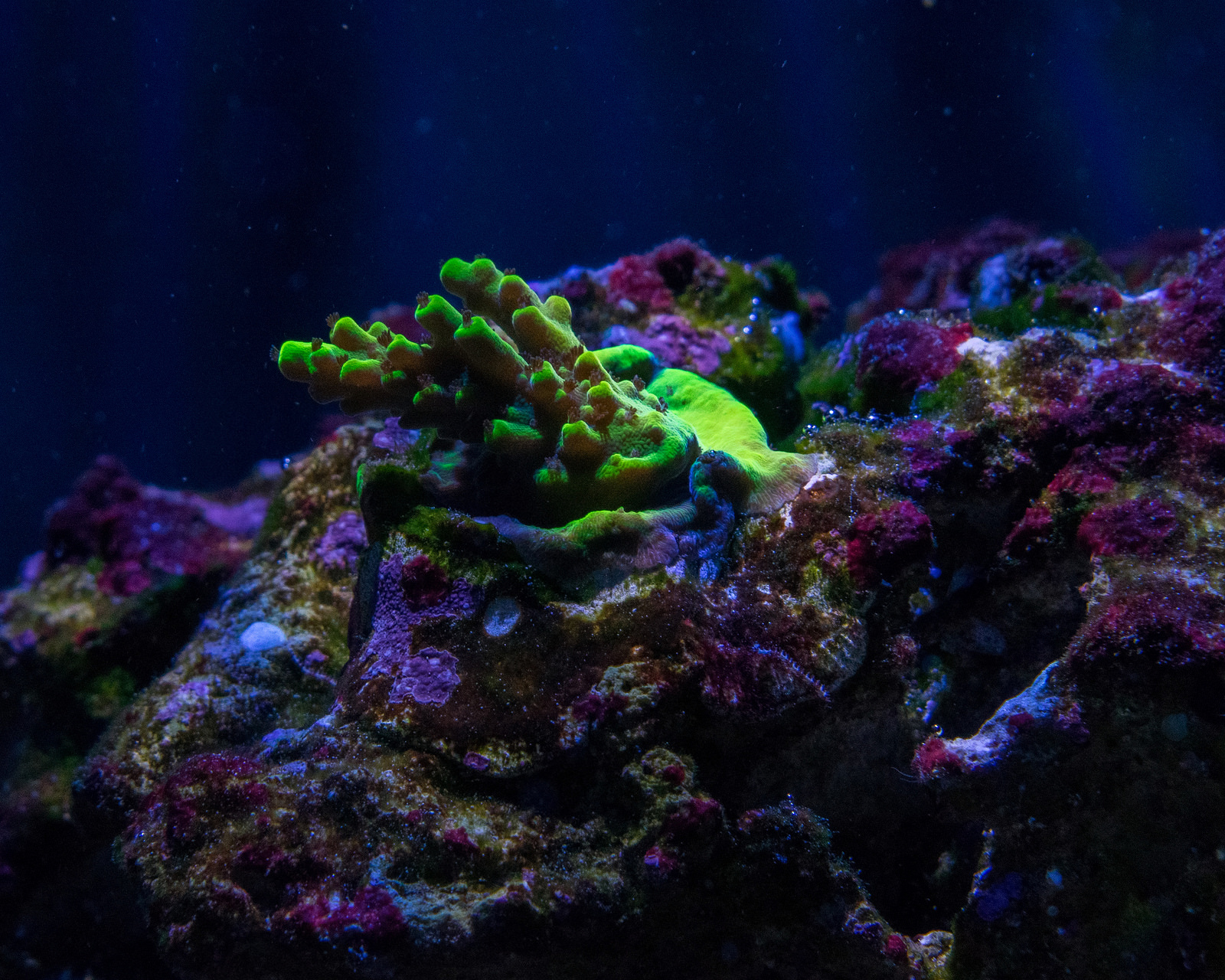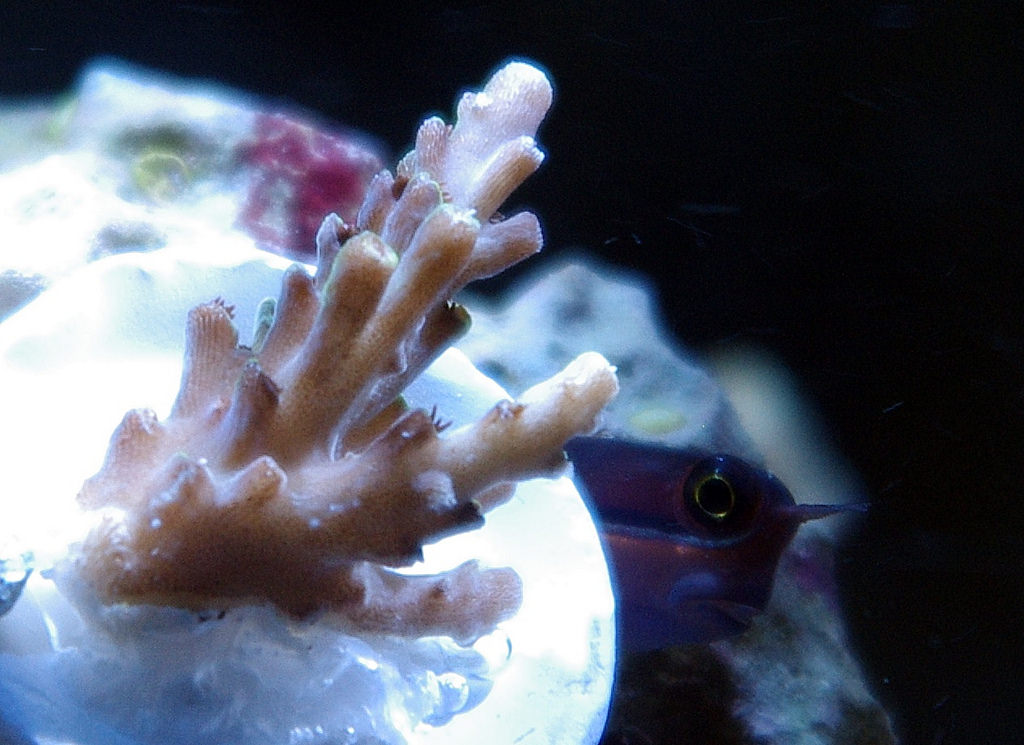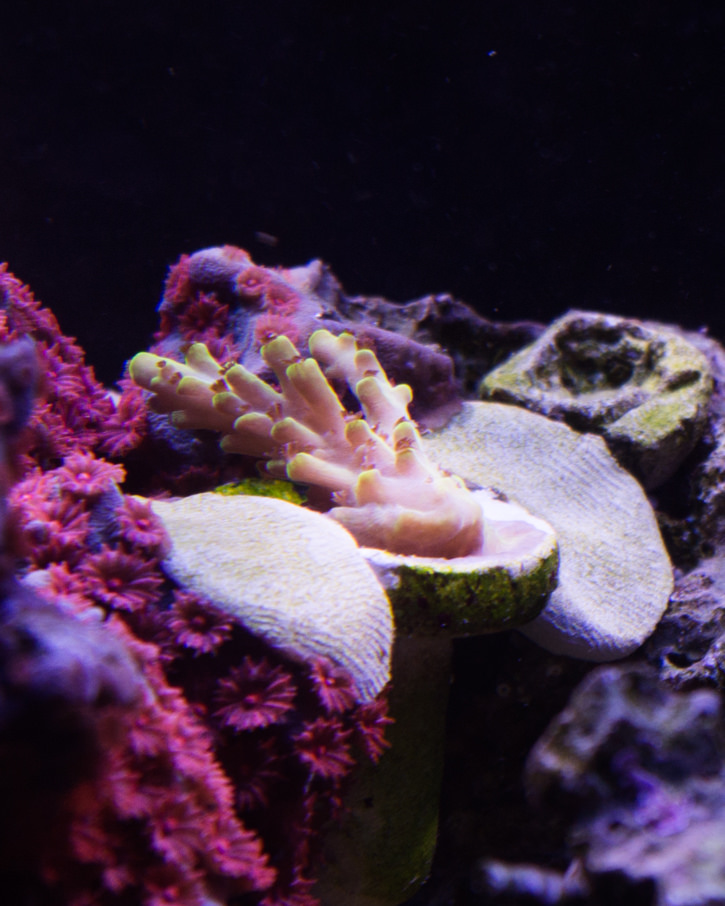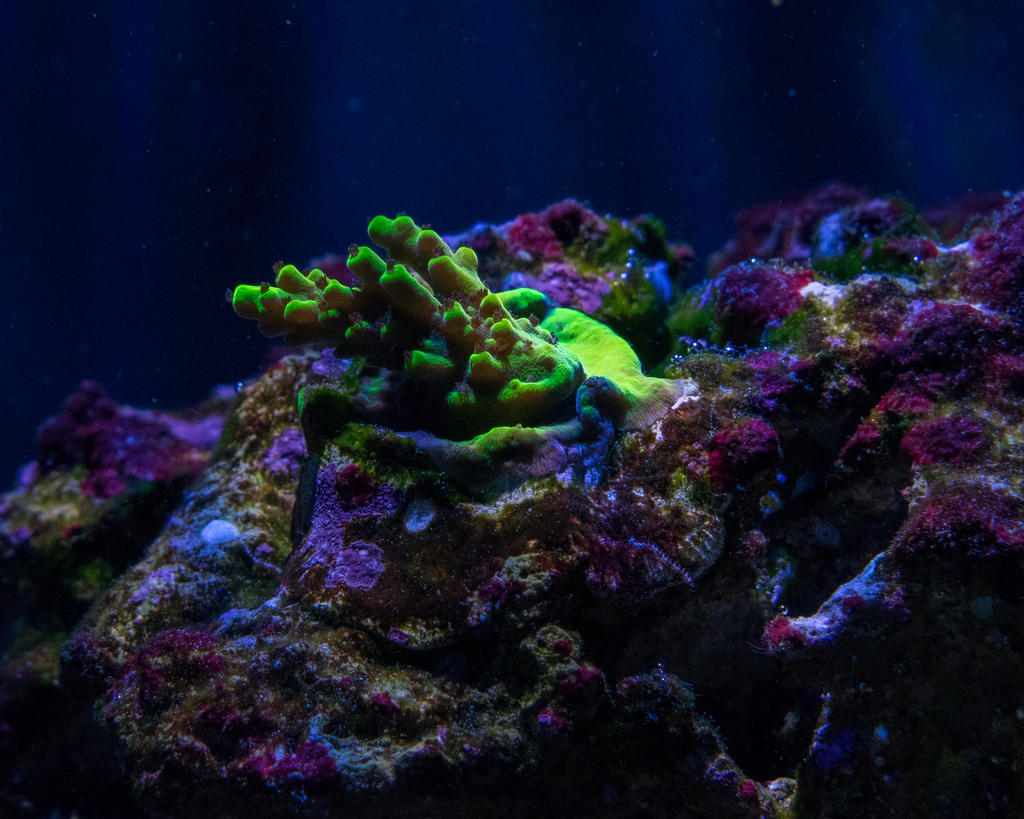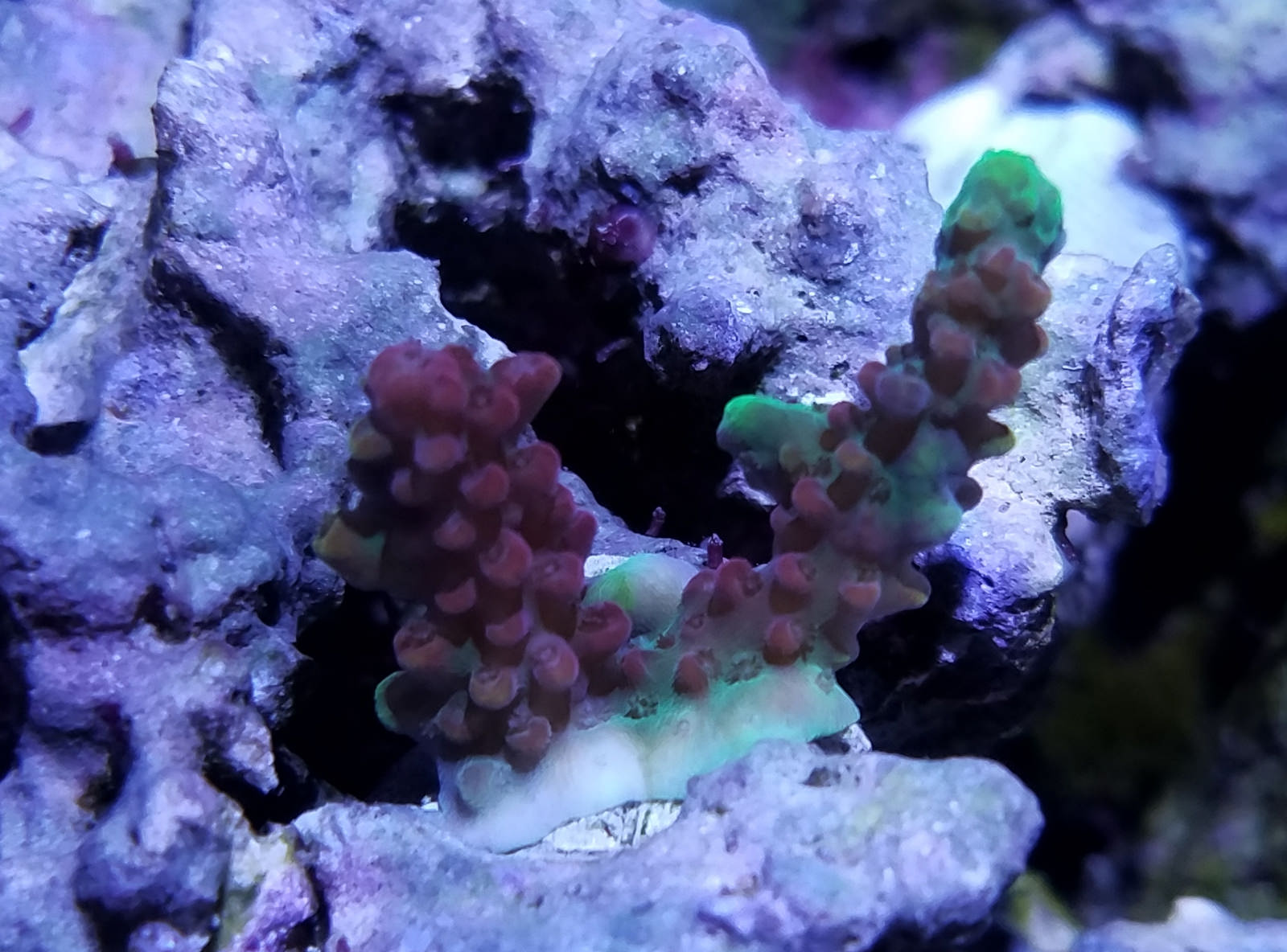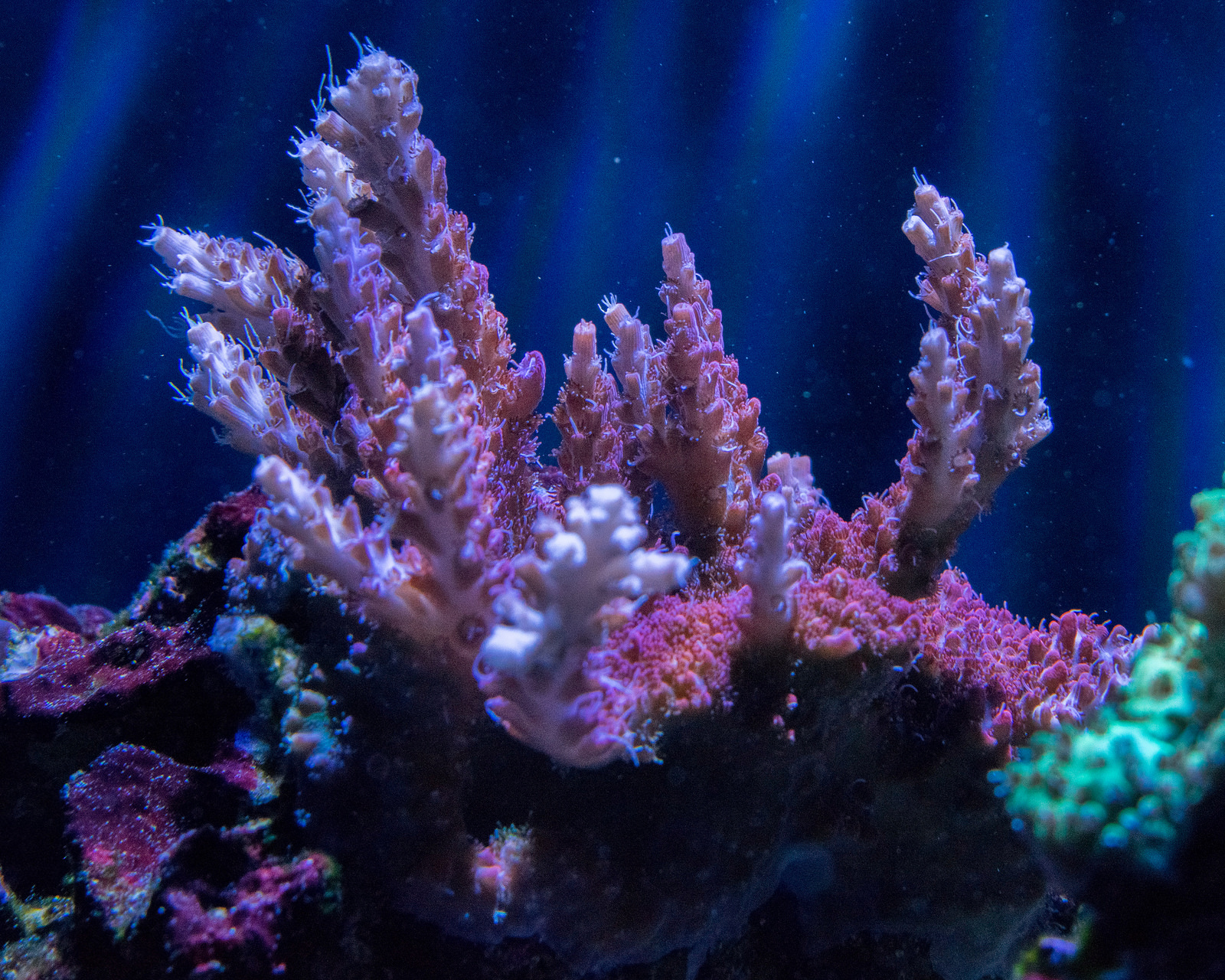I have come to the conclusion that some of my yellow acroporas are definitely some of the most difficult at keeping very yellow. I have an all sps tank.
My lighting is fine as far as spectrum as witnessed by the Wolverine, Pink Floyd and Pikachu showing their beautiful unique vibrant yellow colors when water conditions were met. A PAR meter is used periodically to verify level. All other water parameters have been constant throughout. I believe the change occured when I started to dose PO4, raising and maintaining the level to just detectable (PO4 0.01-0.02ppm).
I had previously maintained a nutrient poor system...NO3 maintained at 1.0ppm and no detectable level of PO4 although, I dosed Fuel at about 1/3 of what would be a daily dose as per instructions. These three corals were a nice yellow but the tank seemed starved overall as the other sps were not exhibiting their true colors and not much growth (in comparison to when I raised the PO4).
It's a perplexing situation when trying to keep all the corals in the tank happy. If I maintain these aforementioned levels the coral in the tank grow great and color up beautifully. I even had to turn up the calcium reactor considerably to supply for the higher Ca demand. The energy that the tank is operating at what seems like another order of magnitude! The only problem is that these three (mentioned) coral started to show a greenish color. I have to point out that throughout, I have had a Pink Lemonade stay as yellow as yellow can be, never affected by the change!
What I am observing is that there seems to be a fine line between keeping all corals happy and colorful while maintaining true yellow in the Wolverine, Pink Floyd and Pikachu (I'm sure other yellow corals fall into this group too). I also wish the Hanna PO4 meter read in thousands instead of hundreds although, I don't think I could afford such a device.
I have noticed previously that when I just used "Fuel" (amino acid) at 1/3 of a daily dose with no dosing of PO4, (NO3 1.0ppm) the coral stayed yellow. For the next several months I will be going back to using Fuel and no PO4 to see if my hunch is correct. I will keep the NO3 at 1.0ppm as to only change one variable. I do believe that Fuel will supply the PO4 needs to the coral that I will eliminate from discontinuing the dosing the PO4 directly.
If the rest of the sps seems to show signs of color loss I will go from there.
Any thoughts or ideas are greatly appreciated.
My lighting is fine as far as spectrum as witnessed by the Wolverine, Pink Floyd and Pikachu showing their beautiful unique vibrant yellow colors when water conditions were met. A PAR meter is used periodically to verify level. All other water parameters have been constant throughout. I believe the change occured when I started to dose PO4, raising and maintaining the level to just detectable (PO4 0.01-0.02ppm).
I had previously maintained a nutrient poor system...NO3 maintained at 1.0ppm and no detectable level of PO4 although, I dosed Fuel at about 1/3 of what would be a daily dose as per instructions. These three corals were a nice yellow but the tank seemed starved overall as the other sps were not exhibiting their true colors and not much growth (in comparison to when I raised the PO4).
It's a perplexing situation when trying to keep all the corals in the tank happy. If I maintain these aforementioned levels the coral in the tank grow great and color up beautifully. I even had to turn up the calcium reactor considerably to supply for the higher Ca demand. The energy that the tank is operating at what seems like another order of magnitude! The only problem is that these three (mentioned) coral started to show a greenish color. I have to point out that throughout, I have had a Pink Lemonade stay as yellow as yellow can be, never affected by the change!
What I am observing is that there seems to be a fine line between keeping all corals happy and colorful while maintaining true yellow in the Wolverine, Pink Floyd and Pikachu (I'm sure other yellow corals fall into this group too). I also wish the Hanna PO4 meter read in thousands instead of hundreds although, I don't think I could afford such a device.
I have noticed previously that when I just used "Fuel" (amino acid) at 1/3 of a daily dose with no dosing of PO4, (NO3 1.0ppm) the coral stayed yellow. For the next several months I will be going back to using Fuel and no PO4 to see if my hunch is correct. I will keep the NO3 at 1.0ppm as to only change one variable. I do believe that Fuel will supply the PO4 needs to the coral that I will eliminate from discontinuing the dosing the PO4 directly.
If the rest of the sps seems to show signs of color loss I will go from there.
Any thoughts or ideas are greatly appreciated.






